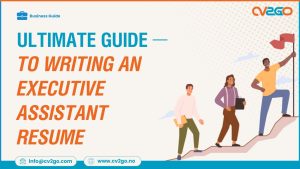To land an interview, your resume needs to stand out. In fact, 98% of resumes are eliminated during the initial screening process. With hundreds of resumes submitted for each position, busy hiring managers and recruiters are often looking for reasons to say no. Your challenge is to provide them every reason to say yes. By knowing what to include in a resume, you can significantly increase your chances of landing an interview.
How Long Should Your Resume Be?
Before diving into the content, let’s address a common question: how long should your resume be?
As a general rule:
- If you have less than 10 years of relevant experience, one page is typically sufficient.
- For more experienced professionals, a longer resume may be appropriate, but avoid repeating information or including irrelevant details just to make your resume appear longer. Doing so can hurt your chances rather than help them.
The goal is to create a resume that is concise, relevant, and impactful. With that in mind, here are the eight most important sections to include in your resume:
1. Contact Information
Your contact information should be placed at the top of your resume. Include:
- Name
- Email Address: Use a professional email address that includes your name or initials (e.g., john.doe@example.com).
- Phone Number: Provide at least one number with a voicemail set up.
- City and State: Full addresses are no longer necessary and may even work against you due to potential biases or commute concerns.
Avoid using the header feature in word-processing programs, as applicant tracking systems (ATS) may not recognize it.
2. Objective or Summary Statement
Beneath your contact information, include a personal statement that answers, “Why am I here?”
For Entry-Level Candidates:
Include a brief objective of one or two sentences, stating the position you’re applying for and a career goal that aligns with the company’s mission. For example:
Example Objective: “To obtain a position as a Marketing Analyst at ABC Corp, leveraging data-driven strategies to drive customer engagement and contribute to the company’s growth.”
For Experienced Professionals:
Use a summary statement to highlight your qualifications and achievements relevant to the job.
Example Summary: “Results-driven Project Manager with over 7 years of experience leading cross-functional teams to deliver enterprise-level solutions. Proven ability to enhance operational efficiency and drive cost savings, achieving $1.5M in annual budget reductions at XYZ Corporation.”
3. Work Experience
List your job history in reverse chronological order, starting with the most recent position. For each role, include:
- Company Name
- Location
- Job Title
- Dates of Employment
- Bullet Points Detailing Key Contributions and Achievements
Tips:
- Use strong action verbs like “managed,” “developed,” and “implemented.”
- Quantify achievements whenever possible. For example, “Increased sales revenue by 25% within six months.”
- Tailor this section to include keywords from the job description.
Chronological vs. Functional Format:
- Chronological Format: Preferred by most hiring managers, as it’s straightforward and easy to follow.
- Functional Format: Use sparingly. This format emphasizes skills over job history and is best for those with gaps in employment or significant career changes.
4. Education
Place this section after your work experience unless you’re a recent graduate or your degree is highly relevant to the role.
What to Include:
- Degree(s)
- Institution Name
- Graduation Date (optional if you graduated more than 10 years ago)
- Relevant Coursework (optional for recent graduates)
Avoid listing your GPA unless it’s above 3.5 and you are early in your career.
5. Skills and Competencies
This section can be included as a standalone section or integrated into your work experience.
Divide Skills Into:
- Hard Skills: Technical proficiencies such as programming languages, certifications, or equipment training.
- Soft Skills: Interpersonal skills such as leadership, communication, and problem-solving.
Example Skills Section:
- Project Management | Agile Methodologies | SQL | Team Leadership
- Problem Solving | Strategic Planning | Time Management
6. Certifications and Memberships
Highlighting certifications or memberships demonstrates a commitment to professional development.
Include:
- Certification Name
- Issuing Organization
- Date Earned or Expected Completion Date
Example:
- Certified Scrum Master (CSM), Scrum Alliance, Earned: 2024
7. Achievements and Awards
Achievements and awards provide evidence of your capabilities. Ideally, these should be woven into your work experience.
Examples:
- “Reduced onboarding time by 30%, saving $100,000 annually.”
- “Recipient of the 2024 Employee of the Year Award for exceeding sales targets.”
If you have industry awards or publications that don’t fit within your job history, list them in a separate section.
8. Community Involvement
Volunteer work can add depth to your resume, especially if it aligns with the company’s values. Place this under work experience if it’s directly relevant or create a separate section if it’s not.
Example:
- Volunteer Team Leader, Habitat for Humanity (2024): Coordinated construction efforts for 10+ projects, engaging over 50 volunteers.
Final Steps: Polish and Refine
Once you’ve included all the necessary sections, review your resume for:
- Typos and grammatical errors. Have a friend or mentor proofread it.
- Redundant or irrelevant information. Remove anything that doesn’t support your application.
- Alignment with the job description. Tailor each application to the specific role.
With these tips, you’re ready to create a compelling resume that gives hiring managers every reason to move you to the top of the pile. For a professional head start, try CV2Go’s templates. Choose from a variety of customizable options designed to make your resume shine.




